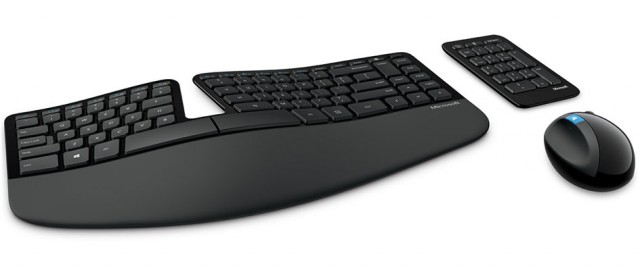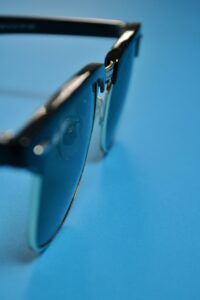Microsoft has released a new ergonomic split keyboard and mouse combo, and it looks downright weird.
The Sculpt Ergonomic Desktop kit pairs a new keyboard, the Sculpt Ergonomic Keyboard, and a new mouse, the Sculpt Ergonomic Mouse. The purpose of both is to encourage you to hold your arms “just so” and keep your wrists healthy.
The mouse has a new, asymmetric shape—no good for lefties, as is so often the case with this kind of thing. Like some of Microsoft’s other recent mice, it includes a dedicated Start button so that you can bring up the Start screen or Start menu with, er, just the click of a button.
But the mouse looks pretty conventional compared to the keyboard. Split keyboards have been with us for several decades now, with Microsoft’s first ergonomic keyboard shipping in 1994. The shape has changed over the years, but apparently the original design wasn’t as healthy as they thought. It’s been replaced with a new, domed design, and the keyboards have never looked quite as strange as the new one.
It’s all about the split. Past Microsoft keyboards have just filled the gap between the keyboard’s two halves with plastic, occasionally adorning it with scroll wheels zoom sliders or buttons. But the new one? It just has… a gap. Empty space.
Microsoft says the keyboard was codenamed Manta Ray, because it apparently looks like a Manta Ray. I think it should have been codenamed Madonna, because it looks like her front teeth.
As is unfortunately traditional for ergonomic keyboards, the new Madonna board messes around with the layout of the page navigation and cursor keys. It comes with a separate number pad that you can put on the right or left hand side. Even if lefties can’t use the mouse, they can at least punch in numbers comfortably.
The mouse and keyboard combo will be available some time this month with an RRP of $129.95 (around £83.50). The mouse alone will set you back $59.95 (around £38.50). The keyboard will be available on its own, but only in “Business” packaging, for around $80.95 (around £52).
Via ars technica



